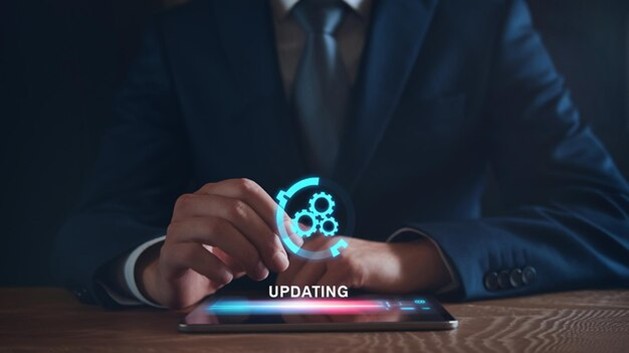Last updated on February 11, 2025

In today’s digital world, keeping your devices and software up to date is essential to protect against security threats. Mobile phones, laptops, and desktops run complex software, such as operating systems (OS), apps, and security programs. Keeping everything updated helps ensure you’re safe from hackers and malware, preventing potential data theft, file encryption, or device failure.
Why Is It Important to Keep Devices Up to Date?
- Security Patches: Device manufacturers and app developers release software updates regularly to fix bugs, introduce new features, and improve performance. Most importantly, they provide security patches to address known vulnerabilities. Attackers often exploit these vulnerabilities to compromise user devices.
- New Features & Performance: Updates often come with new features that enhance user experience and can improve your device’s speed and performance.
- Automatic Updates: Most devices support automatic updates, but it’s always good to check and make sure it’s enabled. If updates are automatic, they will likely install without your intervention, but they still require periodic attention.
What to Keep Up to Date
Several types of software must be updated to maintain security:
- Operating System (OS): Keep your device’s OS up to date. Most operating systems allow automatic updates, but check that this feature is enabled.
- Web Browser and Extensions: Browsers are particularly vulnerable to cyberattacks. Make sure your browser, along with any extensions, is updated regularly.
- Third-Party Apps: Apps installed from external sources (such as office apps, photo editing apps, etc.) should be updated as well. Some apps update automatically, while others may require manual updates.
- Antivirus Software: If you use antivirus software, ensure it’s updated to include the latest virus definitions, helping it identify new threats.
Key Steps for Keeping Your Devices Safe
- Enable Automatic Updates: Ensure that automatic updates are activated for all critical software, including the OS, browser, antivirus, and office apps.
- Promptly Install Updates: When notified about an update, install it within a few days to ensure your device stays secure.
- Regular Backups: Set up automatic backups or back up data regularly, so you can restore it if something goes wrong during an update.
- Monitor Software Updates: Check from time to time that your devices are properly updating themselves. If you encounter issues (e.g., low storage), resolve them promptly.
- Choose Long-Supported Devices: When buying new devices, consider how long the manufacturer supports them. Longer support periods mean you’ll receive security updates for a more extended time.

